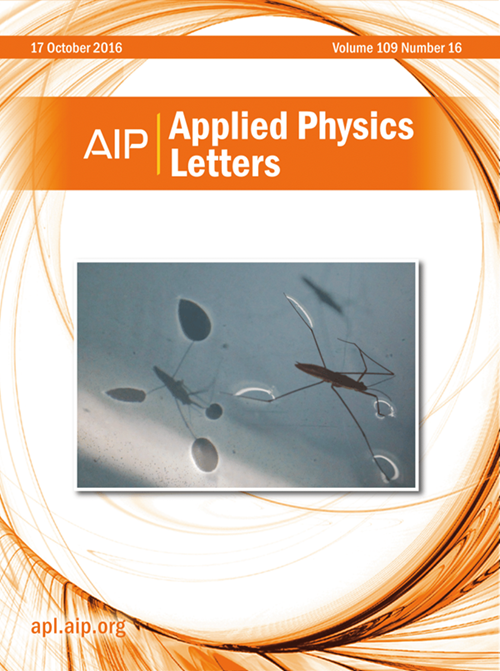钙钛矿发光二极管CsPb(Br1−xIx)3电子和光学性质的第一性原理研究
IF 3.5
2区 物理与天体物理
Q2 PHYSICS, APPLIED
引用次数: 0
摘要
CsPb(Br1−xIx)3是一种混合卤化物全无机钙钛矿,由于其令人印象深刻的性能,是一种有前途的发光二极管(LED)材料。结果表明,卤素成分的混合参数x对CsPb(Br1−xIx)3的发光效率有显著影响。然而,潜在的微观机制仍不清楚。利用第一性原理计算,我们研究了阴离子混合对钙钛矿材料辐射和非辐射复合性能的影响。对CsPb(Br1−xIx)3体系中载流子迁移率、激子结合能、亲和能和缺陷形成能的模拟共同表明,高的Br比值与提高的发光效率有关。其中,溴碘比为2:1时,CsPb(Br1−xIx)3的发光性能最佳,溴碘比为1:1时,CsPb(Br1−xIx)3的发光性能下降。结果表明,卤素原子(Br和I)的比例对铯基全无机钙钛矿CsPb(Br1−xIx)3的LED性能有显著影响,为实验制备铯基全无机钙钛矿提供了有价值的指导。本文章由计算机程序翻译,如有差异,请以英文原文为准。
First-principles study on electronic and optical properties of perovskite light-emitting diodes CsPb(Br1− xIx)3
CsPb(Br1−xIx)3, a mixed-halide all-inorganic perovskite, is a promising light-emitting diode (LED) material due to its impressive performance. It has been demonstrated that the mixing parameter x of halogen composition significantly influences the luminescence efficiency of CsPb(Br1−xIx)3. However, the underlying microscopic mechanisms remain unclear. Using first-principles calculations, we investigate the effects of anion mixing on the radiative and non-radiative recombination properties of perovskite materials. Simulations on the carrier mobility, exciton binding energy, affinity energy, and defect formation energy of the materials in the CsPb(Br1−xIx)3 system collaboratively revealed that a high ratio off Br is associated with enhanced luminescence efficiency. Specifically, CsPb(Br1−xIx)3 exhibits optimal luminescent performance with a 2:1 bromine-to-iodine ratio, while it shows the performance degradation with a 1:1 ratio. The results demonstrate that the ratio of halogen atoms (Br and I) has a significant influence on the LED properties of cesium-based all-inorganic perovskites CsPb(Br1−xIx)3, providing a valuable guide for the experimental preparation of cesium-based all-inorganic perovskites.
求助全文
通过发布文献求助,成功后即可免费获取论文全文。
去求助
来源期刊

Applied Physics Letters
物理-物理:应用
CiteScore
6.40
自引率
10.00%
发文量
1821
审稿时长
1.6 months
期刊介绍:
Applied Physics Letters (APL) features concise, up-to-date reports on significant new findings in applied physics. Emphasizing rapid dissemination of key data and new physical insights, APL offers prompt publication of new experimental and theoretical papers reporting applications of physics phenomena to all branches of science, engineering, and modern technology.
In addition to regular articles, the journal also publishes invited Fast Track, Perspectives, and in-depth Editorials which report on cutting-edge areas in applied physics.
APL Perspectives are forward-looking invited letters which highlight recent developments or discoveries. Emphasis is placed on very recent developments, potentially disruptive technologies, open questions and possible solutions. They also include a mini-roadmap detailing where the community should direct efforts in order for the phenomena to be viable for application and the challenges associated with meeting that performance threshold. Perspectives are characterized by personal viewpoints and opinions of recognized experts in the field.
Fast Track articles are invited original research articles that report results that are particularly novel and important or provide a significant advancement in an emerging field. Because of the urgency and scientific importance of the work, the peer review process is accelerated. If, during the review process, it becomes apparent that the paper does not meet the Fast Track criterion, it is returned to a normal track.
 求助内容:
求助内容: 应助结果提醒方式:
应助结果提醒方式:


